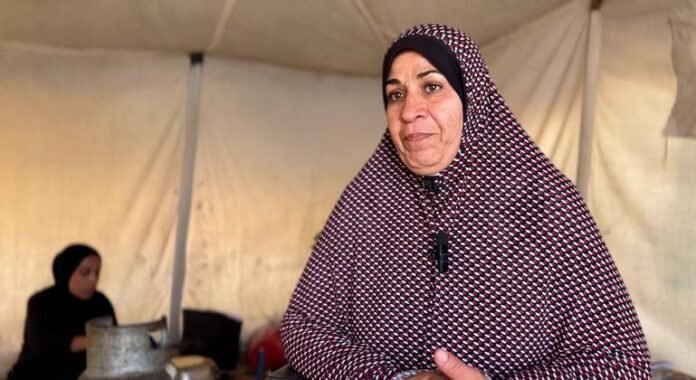About 90 percent of the population of the Gaza Strip has been displaced from their homes. Many people have been forced to migrate repeatedly to escape Israeli military attacks. Some people have been displaced 10 times or more.
Much of Gaza is filled with rubble, while Israeli airstrikes and military operations have damaged or destroyed about 60 percent of buildings, including homes, schools and hospitals.
Continued Israeli airstrikes have pushed healthcare services in Gaza to near collapse, sewage systems have collapsed, created serious environmental and health risks, and water systems are at risk.
The UN correspondent in Gaza spoke to displaced people sheltering in the central area of Nusirat, who are hoping to return to their remaining homes and get their lives back on track.
One woman, Umm Mohammed Hanun, is determined to return with her family to the al-Karama settlement in northern Gaza, despite the dire humanitarian situation. Where he received news that his house was destroyed in a drone strike.
“My plan is to remove the debris, pitch a tent on my land and resettle there,” he says.
“I just want to see my home. I hope Gaza will be rebuilt and our lives will go back to the way they were before.”
‘We deserve a better life’
“I want to go back to Gaza City for one reason, and that’s to see my father,” said Sami Abu Tahoun, a child displaced from Gaza City after receiving news of the ceasefire agreement.

The teenager said he had not seen his father since the war forced him to flee the northern Gaza Strip. “When we left our home, I lost something very important in life – my father.”
“When my mother asked me to pray, I refused. I wanted to wait until I had a chance to pray with my father.”
‘Death and destruction galore’
Ayman Abu Radwan, another Palestinian like Sami, said, “We want to think about our future now. Enough of death and destruction.”
They have been forced to leave their homes in Gaza City and live in a tattered tent in central Gaza.
“We are tired now. We have endured the heat of summer and the cold and frost of winter. The children are dying. Every night, shivering in the cold, I am awakened by the screams of a two-week-old baby.”

“I hope our situation improves. We deserve a better life.”
Mohammed Al-Quqa was displaced from the Al-Shati refugee camp west of Gaza City. He said that even if the people of Gaza could return to their homes after the ceasefire and the rebuilding of the Gaza Strip, the emotional pain would continue.
“The biggest pain will be the mental state. “The war has been going on for a long time, and our families, our children have seen things they should never have seen.”
UN humanitarian aid team ready to step up aid
If Sunday’s ceasefire agreement goes into effect, it is widely expected that aid flows to the Gaza Strip will increase significantly – in line with the terms of the agreement.
Throughout the war, humanitarian aid convoys carrying vital supplies were repeatedly delayed or prevented from entering Israeli military checkpoints. (In December, 70 percent of coordinated support missions were rejected by Israeli officials).

The World Food Program (WFP) said on Thursday that 80,000 tons of food items outside Gaza are awaiting entry into Gaza. This material is enough to feed more than one million people.
The UN Food Aid Agency, however, has also highlighted the importance of unhindered movement to reach people in need.

